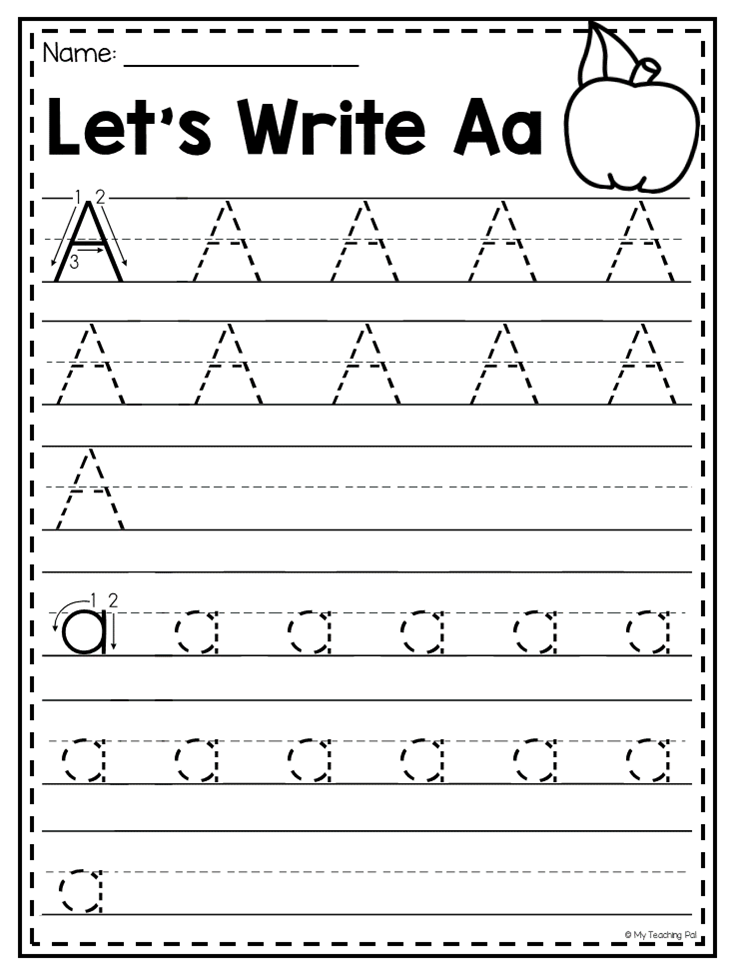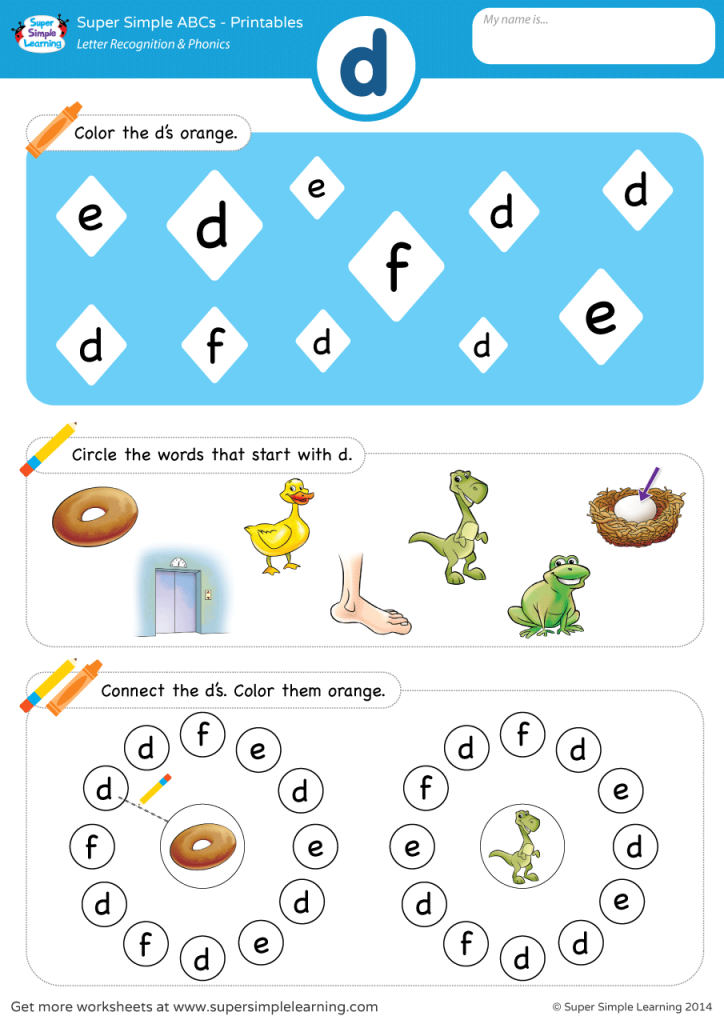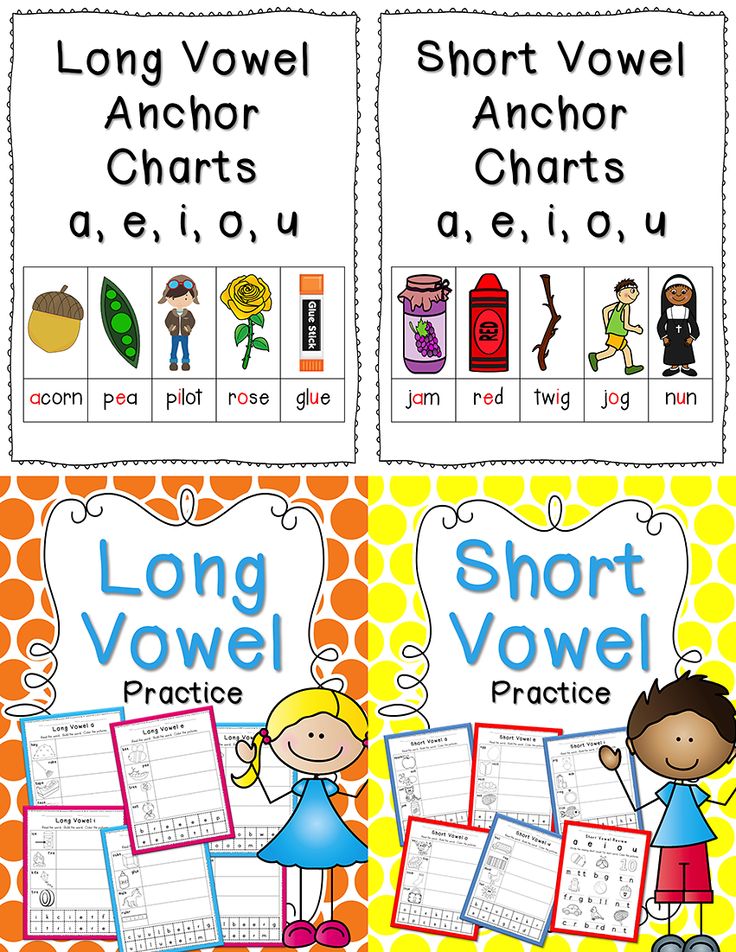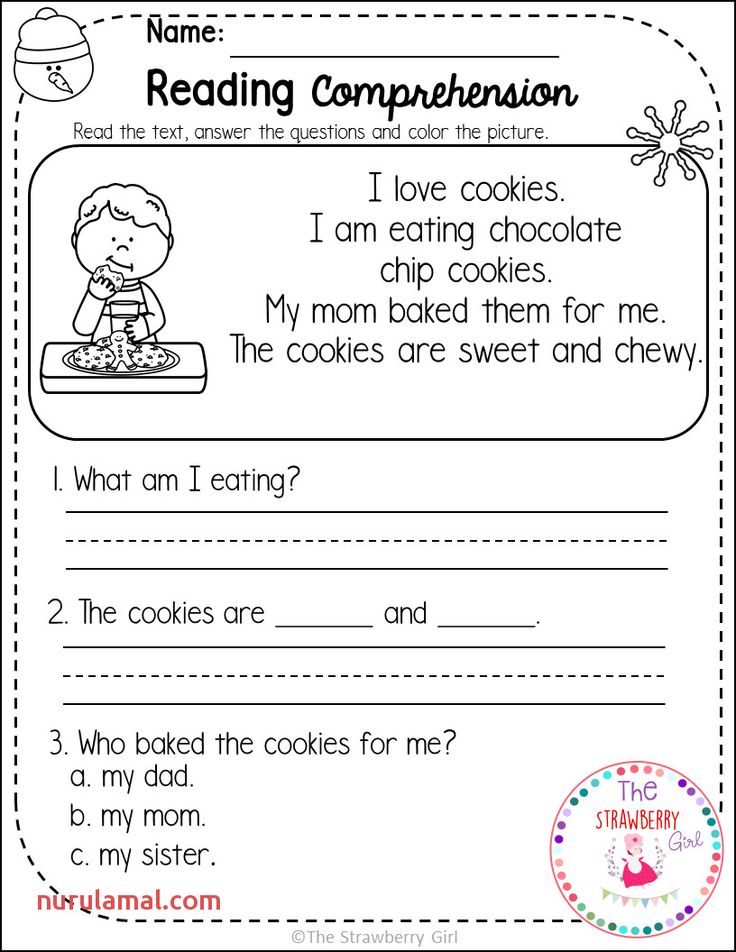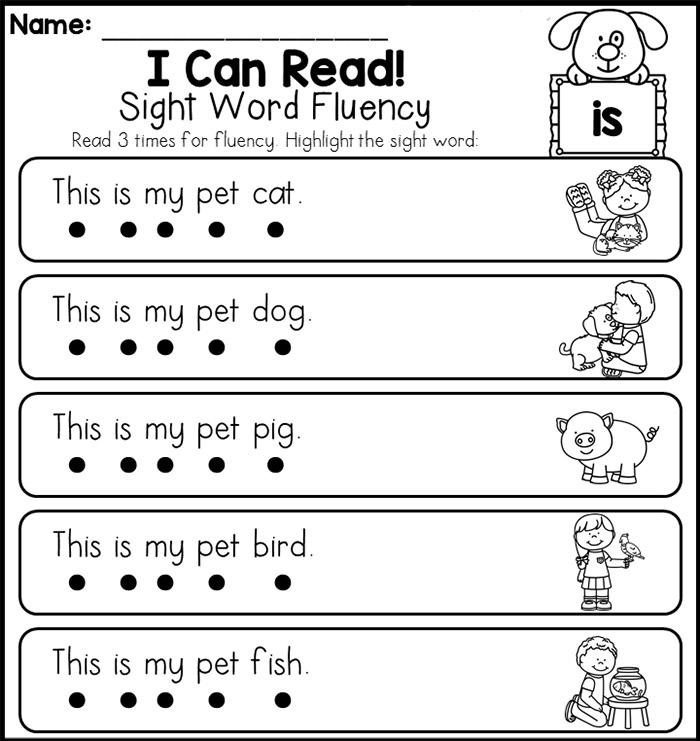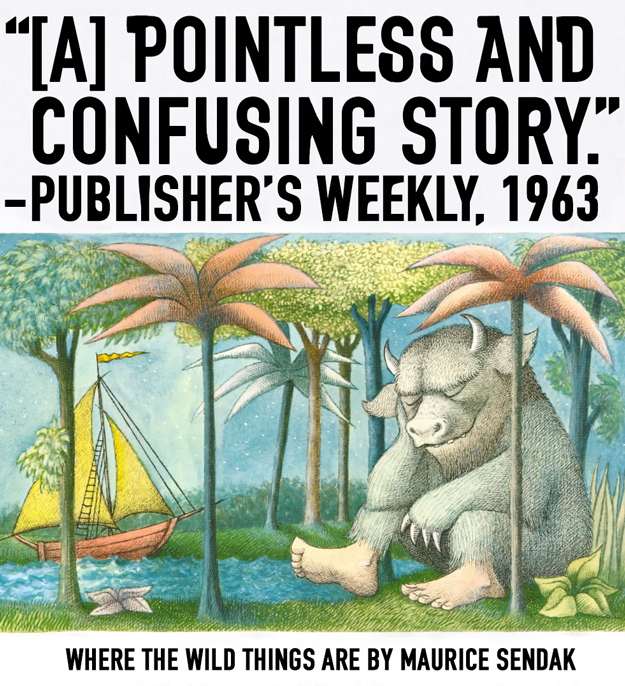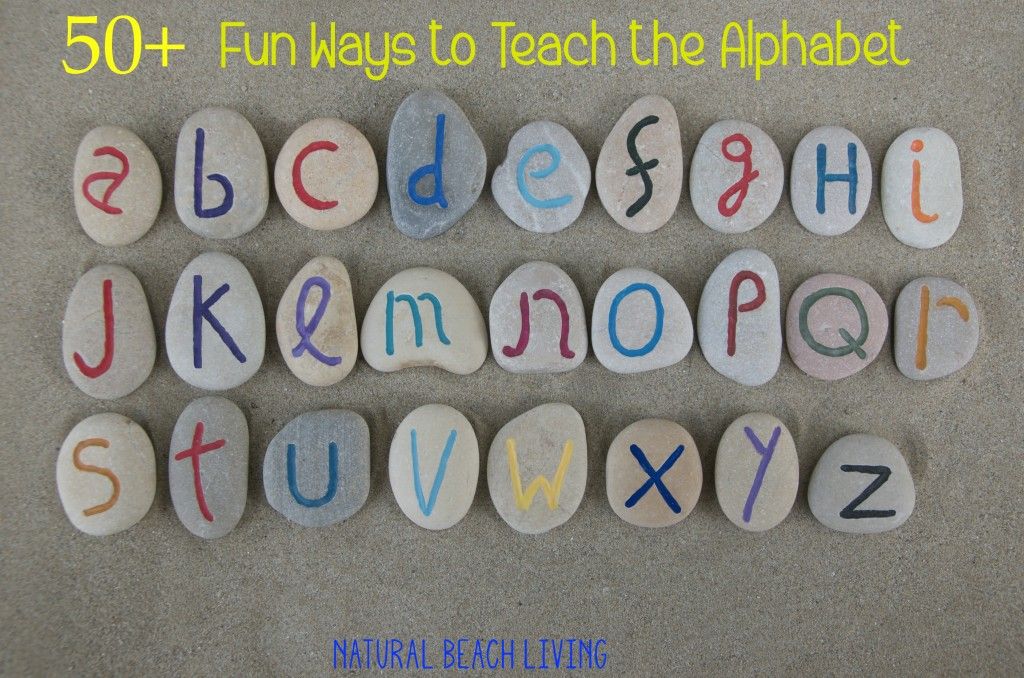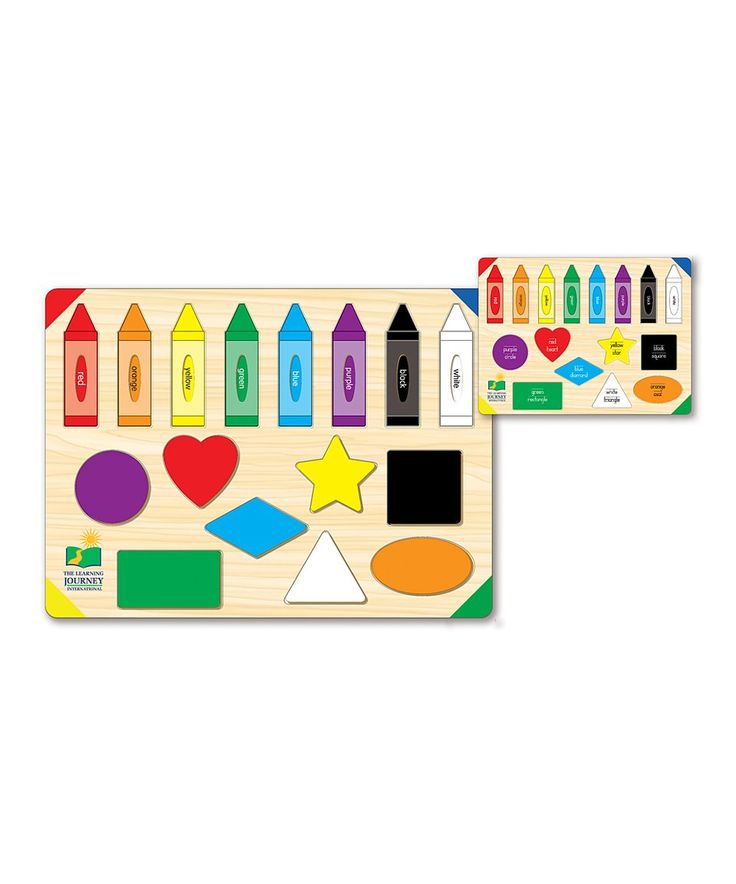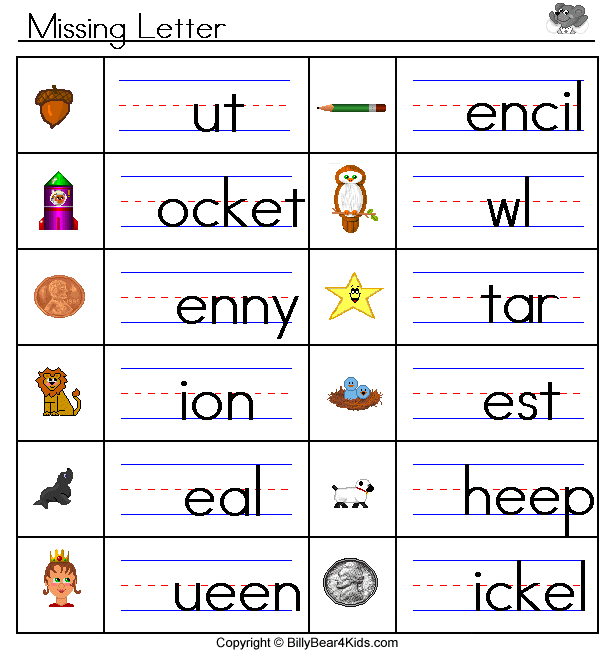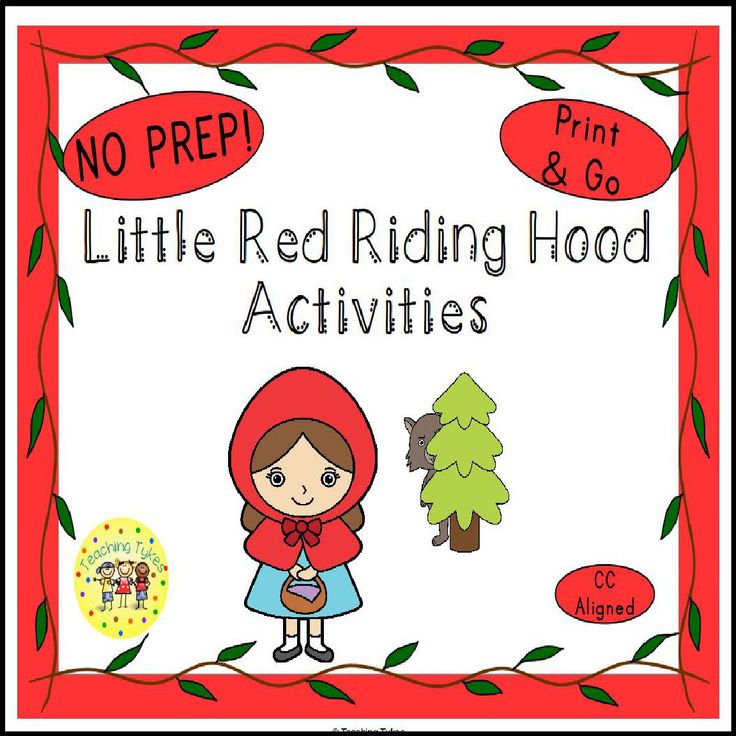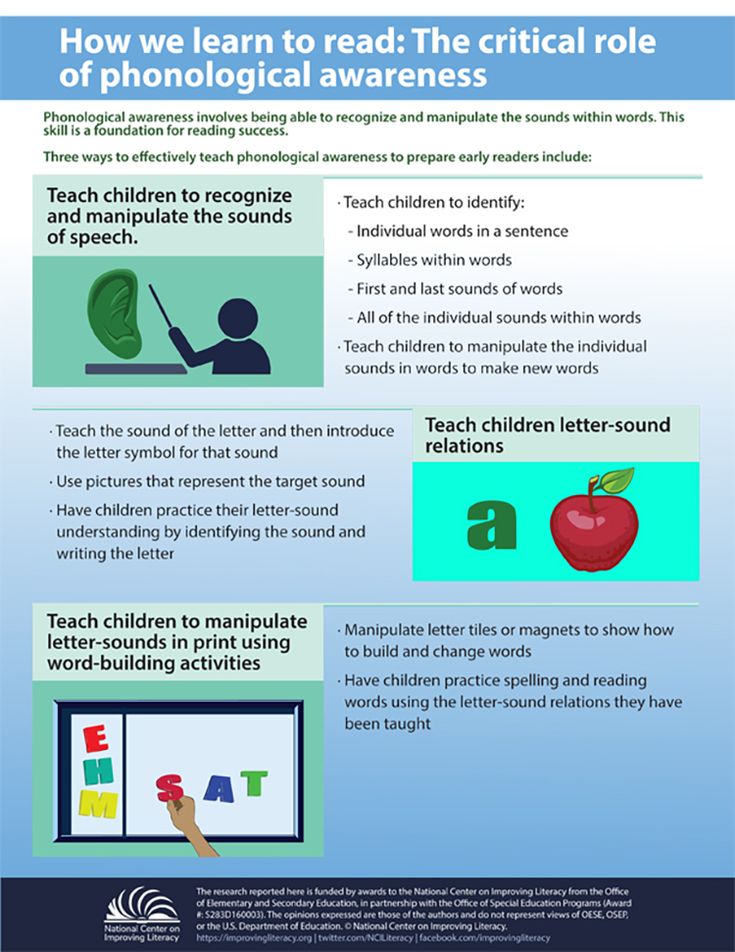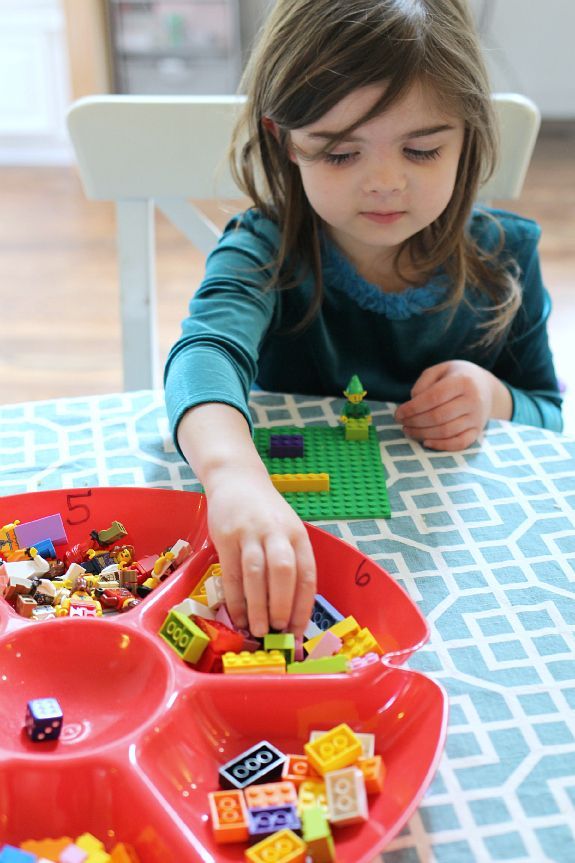Letters for children
Teach your Child the Alphabet Here!
Anyone who has kids or has taught them will tell you how difficult it can be to get them to focus on anything for extended periods of time, especially if it’s anything educational. That’s why we’ve came up with a couple of creative options you can try to coax kids into learning and hopefully remembering their ABC’s:
Select the Alphabet to see specific activities corresponding to that letter.
Letter A Activities Letter B Activities Letter C Activities Letter D Activities Letter E Activities
Letter F Activities Letter G Activities Letter H Activities Letter I Activities Letter J Activities
Letter K Activities Letter L Activities Letter M Activities Letter N Activities Letter O Activities
Letter P Activities Letter Q Activities Letter R Activities Letter S Activities Letter T Activities
Letter U Activities Letter V Activities Letter W Activities Letter X Activities Letter Y Activities
Letter Z Activities
Here are some other ways:
Drive Somewhere:
This one is fairly easy to pull off, especially if you drive your kids on the morning school run. All you have to do is point at things like billboards or licence plates and have your children work their way through the letters on it.
It’s an interesting way of learning and it has the added benefit of keeping your kids amused on those long haul journeys or when you’re stuck in traffic.
Alphabet Challenge:
This one can be a lot of fun if you do it right. What you need to do is call out a series of letters or show your children letters on a board for a few brief seconds then have them write a word associated with that letter.
So for example, you would say the letter ‘b’ and they would then have to write ‘ball’, ‘bee’ or if they’re trying to show off ‘byzantine’, although the latter would probably be a bit of a fluke.
Make Alphabet Snacks:
It’s common knowledge that kids love snacks, they will devour everything animal shaped or colorful that’s put in front of them like a pack of tiny piranhas.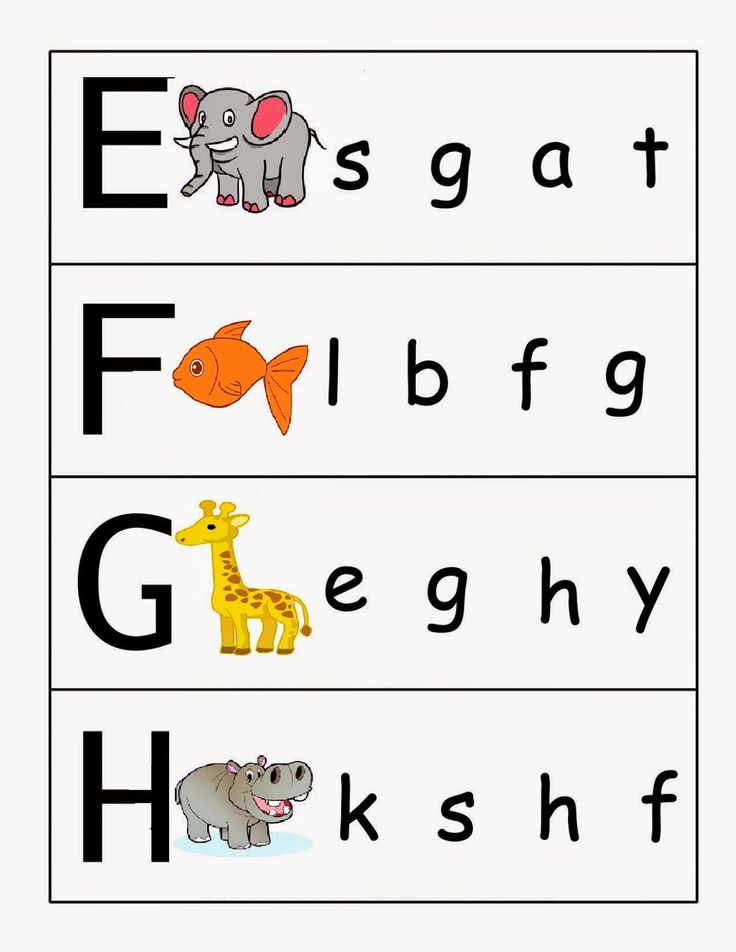 So what better way to funnel this hunger than by making them snacks based on the alphabet.
So what better way to funnel this hunger than by making them snacks based on the alphabet.
However, instead of turning them loose on the undefended cookies you could tell them to only eat one specific letter.
For example, they can only eat something that’s shaped like the letter ‘a’. That way they start to associate learning the alphabet with treats, which in turn helps to motivate them to learn more.
Sing-Along-Songs:
Sing-Along-Songs are perhaps your best weapon in the war against getting your kids to learn the alphabet. These catchy little tunes are always fun to sing with your children and they will always love a chance to sing a silly song.
If you really want it to stick you could do it every day to maximize the effects of the hypnotic melodies.
Alphabet Bingo:
This one is a ton of fun to play and set up; you can try wrangling your kids in to help you make the cards. For bonus parent points you could let them customize their cards, which will in turn help nurture their own creativity.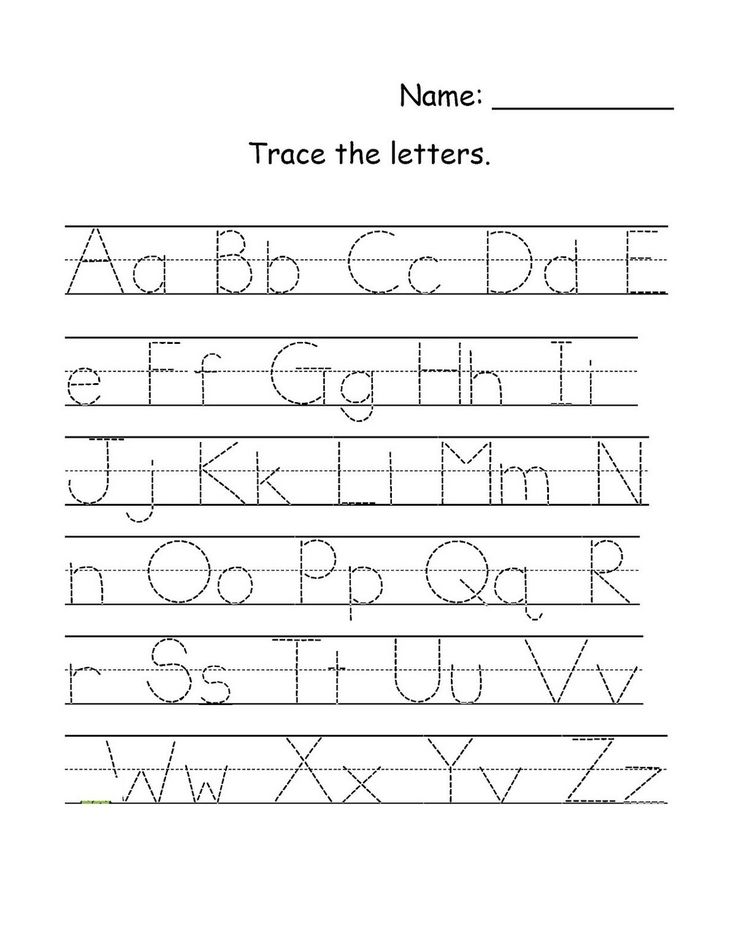
How it works is, you sit your kids down and they each have a card with a series of letters on it, you then sound out the letter as if you were a bingo caller and the kids tick off the appropriate squares on their card. The first child to fill in their card or make a horizontal or vertical line is the winner.
If you want to get really creative you could say words instead of letters and the kids can mark off the first letter of the word. Or if you want to help them with their spelling you could change it to the second, third or fourth letter, although you should make sure the letters you’re using will appear on the cards.
Alphabet Bag Game:
Last, but not least is the Alphabet Bag game. This activity is pretty straightforward to set up; you need a bag and an assortment of items.
Once you have your bag you then show the contents to the kids and ask them to pick an item beginning with a specific letter out of it without looking. If they get it right they win, simple as that.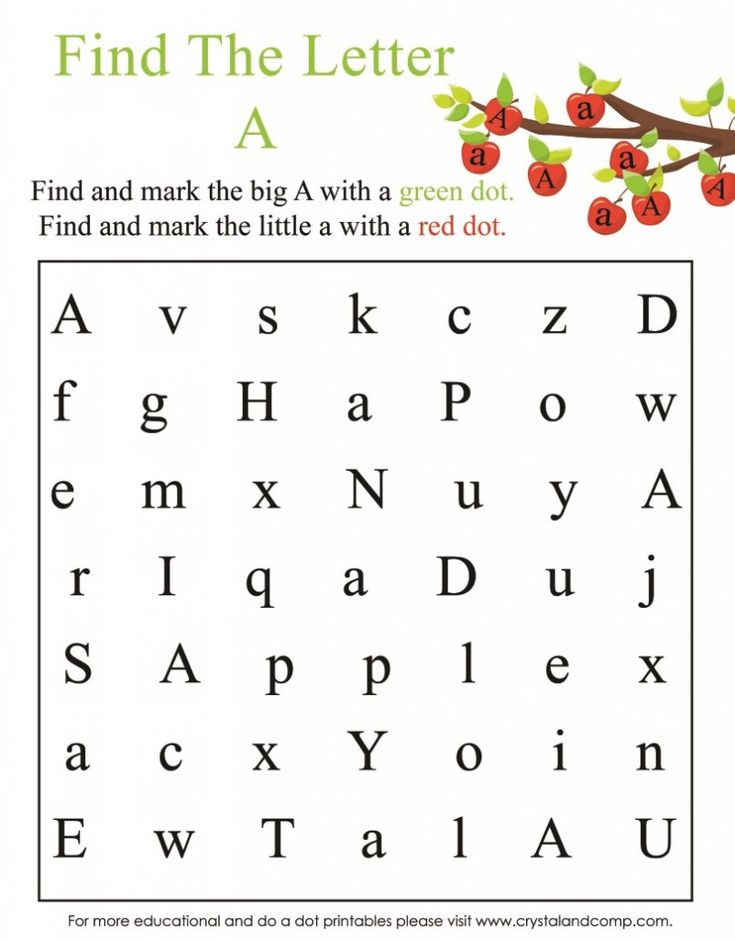
These are just a couple of creative ideas you can try to help your children learn the alphabet, each child will take to these various activities differently, it just depends on how fun you make it for them.
When you’re making your own game at home just remember that your main focus of the activity is to make it as fun as possible for your kids, otherwise they won’t show any interest in it at all.
Letter A Activities & Fun Ideas for Kids
You have come to the right place if you are looking for fun, engaging and exciting Letter A themed activities to do with toddlers, preschoolers and kindergartners. Our activities are widely used by teachers, moms, dads, child care providers etc. for learning and teaching while being fun for the kids!
All our activities are available at no cost and are free to print and share. Select below to get started.
Contents
- Letter A Arts and Crafts
- Letter A Games and Activities
- Letter A Recipes and Snacks
- Letter A Songs, Poems and Finger Plays
Apple Stamping
Apple stamping is a lot of fun.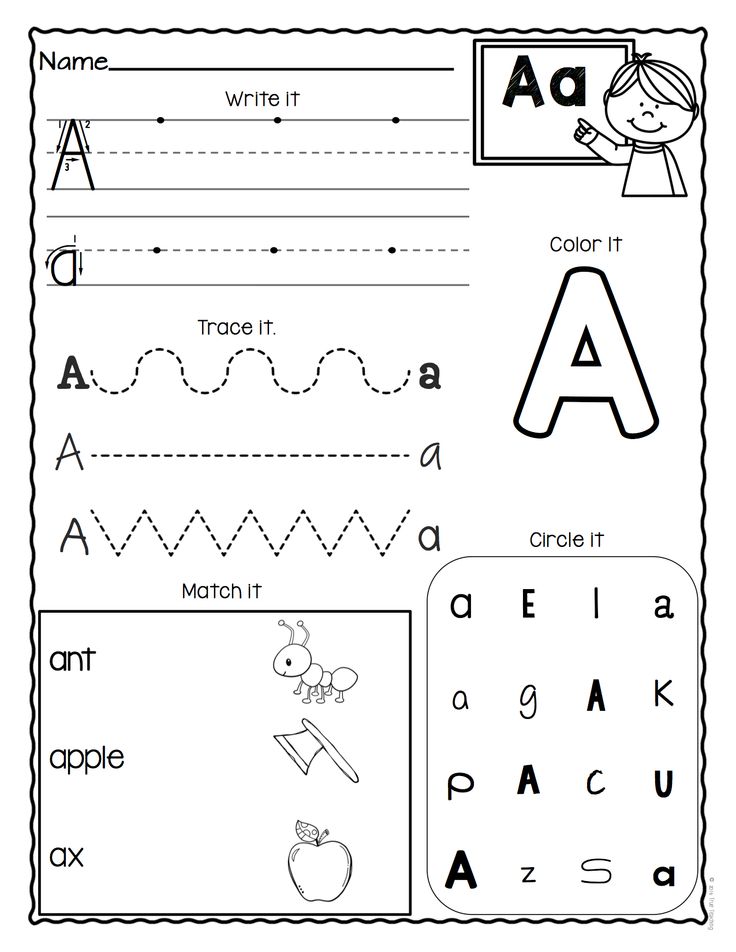 Cut an apple in half, and carve out the shape of the letter “A”. Have your child stamp the letter on a sheet of paper and say the “A” sound each time they stamp.
Cut an apple in half, and carve out the shape of the letter “A”. Have your child stamp the letter on a sheet of paper and say the “A” sound each time they stamp.
Angels
Cut out a large white triangle for the body, and skin-colored circle for the head, and trace hand prints on white construction paper for the wings. Glue together, and add facial features and a halo.
My “A” Book
Staple several pieces of white construction paper together with a colored construction paper cover. Print “My A Book” and your children’s name on the cover. Cut out magazine pictures of those things which begin with the letter “A”, as well as actual upper and lowercase letters from ads or article titles. Let the children chose the pictures and letters they want, and glue them onto their book pages. Later, arrange a time for the children to read their books to you.
Feelie Box
Have a feelie box, that children can’t look into, such as covered with a towel or sheet.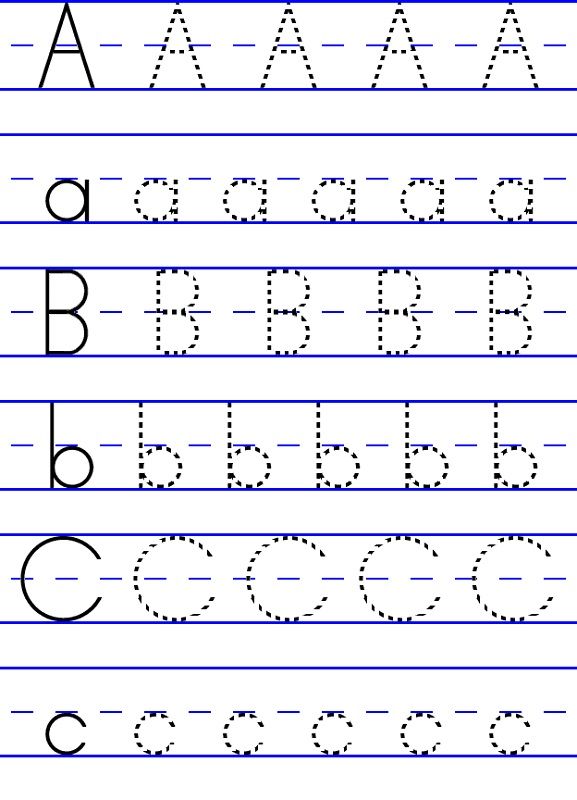 Have them guess the object starting with the letter “A” that you have placed in the box.
Have them guess the object starting with the letter “A” that you have placed in the box.
Make an Airplane
You will need:
2 paper towel rolls
1 toilet paper roll
Craft Sticks
Glue
One of the paper towel rolls, measure about 3″ down from the top and cut 1/2 way through. Measure another 2″ down and again cut halfway through. Remove the section between the cuts. Glue the second paper towel roll through this section. Paint the airplane and using craft sticks to form an “X”, paint them white and glue to the front of the airplane for a propeller. Break another craft stick in half and insert them in the tube under the wings for landing gear.
Ants
Use 3 sections of a cardboard egg carton to form the body. Have the children paint it any color they wish. Using pipe cleaners, put antennae on the first section, and six legs on each of the 3 sections. Draw eyes or use wiggly eyes on the front section.
Make an Ark
Cut out two large boat shapes and punch holes around sides and bottom.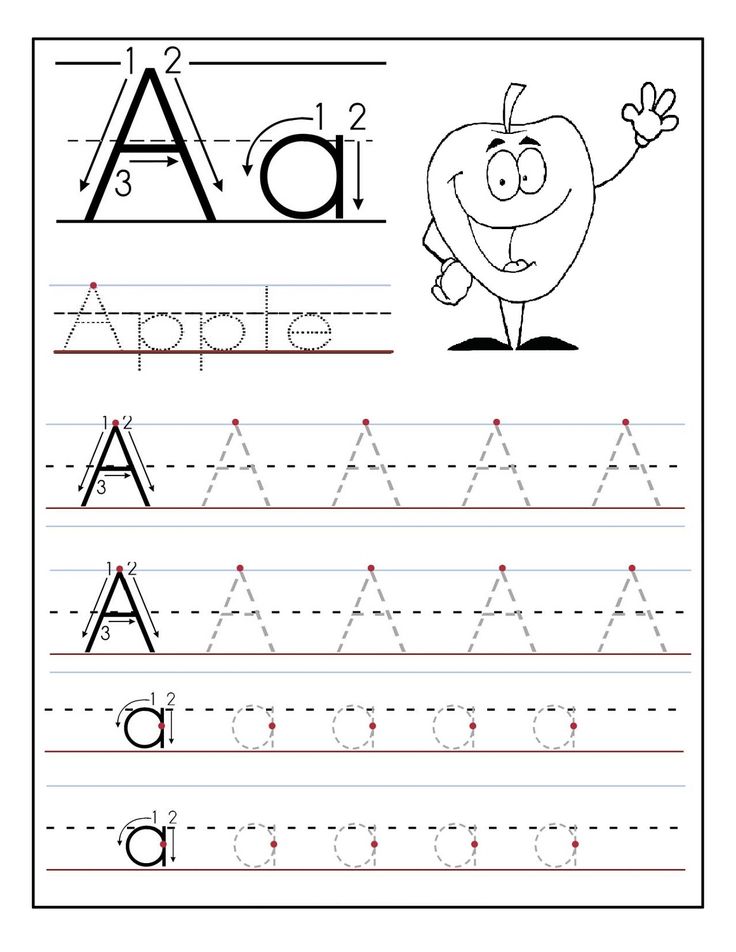 With shoe laces or yarn (wrap ends tightly with tape to prevent fraying), lace the 2 pieces together. Make a rainbow shape for the top to fit on like a handle. Let the children color the handle and staple or glue to the top of the ark. Fill the boat with animal crackers. As each child selects a cracker to eat, have them tell what kind of animal it is.
With shoe laces or yarn (wrap ends tightly with tape to prevent fraying), lace the 2 pieces together. Make a rainbow shape for the top to fit on like a handle. Let the children color the handle and staple or glue to the top of the ark. Fill the boat with animal crackers. As each child selects a cracker to eat, have them tell what kind of animal it is.
“A” Collage
Cut out a large “A” from poster board or other heavy paper. Have the children find pictures of things in magazines that begin with the letter “A”, and either cut or tear them out. Glue them on the “A.”
Acorn Collage
Cutout a large “A” from heavy paper or cardboard. Have the children collect acorns, and glue them to the “A”. Explain how acorns grow into oak trees.
Ant Fun
Cut out a big letter “A” for each child and let them make ant prints all over it with their fingerprints and a stamp pad. Use small tip markers to draw in legs.
ABC GAME From ChildFun Reader Heidi:
I am a teacher and I use this game for children in junior primary to learn the sounds of the alphabet.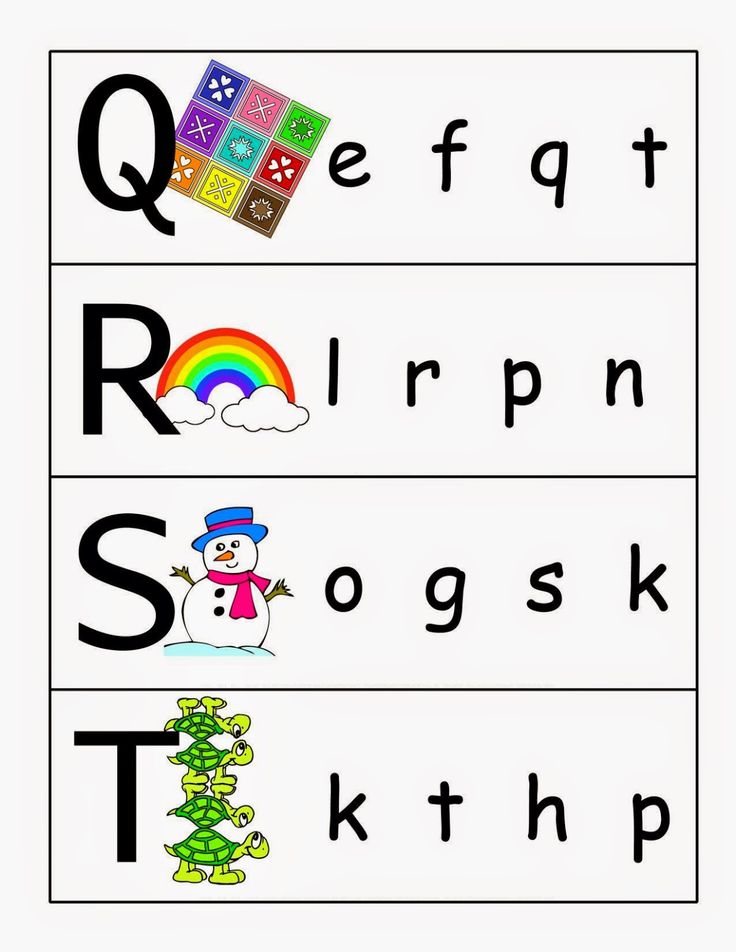
All children stand or sit in a circle. Place an alphabet card on the ground in front of them. Play some music and children walk around the circle. When the music stops, they sit in front of the closest card. We then go around the circle and each child has to tell me the sound of the letter they have.
With older children, I ask them to tell me a word that begins with that sound, or has that sound in the middle or end. It works really well and the children have so much fun.
Acrobatics
Invite the children to perform acrobatic feats such as somersaults, head stands, back bends, bridges, rocking horses, etc. Be sure to put down a gym mat, or arrange a field trip to a gym. Consider sponsoring a gymnastics meet.
ABC Bingo
Easy to make out of construction paper or poster board. Use buttons or beans to cover spaces. Have children match as you call out lower/uppercase, etc, first child to cover card yells “Bingo.” Prizes can be simple, such as a granola snack or extended time in a certain area.
Aluminum “A” Cut aluminum foil into long strips and glue to a large cutout letter “A”. Discuss the uses of aluminum with your kids, as well as recycling. Have each child bring something recyclable from home and let them place in a recycle bin.
“A” Sounds
Talk about things from home that begin with the letter “A” and see how many things the children can think of.
Airplanes
Make paper airplanes and fly them around, or line up chairs in 2 rows and pretend it’s the inside of an airplane. Make up your own tickets, provide flags for someone to wave when the runway is clear.
I know my Address!
Encourage each child to memorize his or her address. Draw and cut out a large construction paper house to place on a bulletin board. Then, as the children memorize their addresses, invite them to pin his or her name and address on the house shape. A good way to help children remember their address is to have them sing it to the tune of a simple song such as “Rain, rain go away.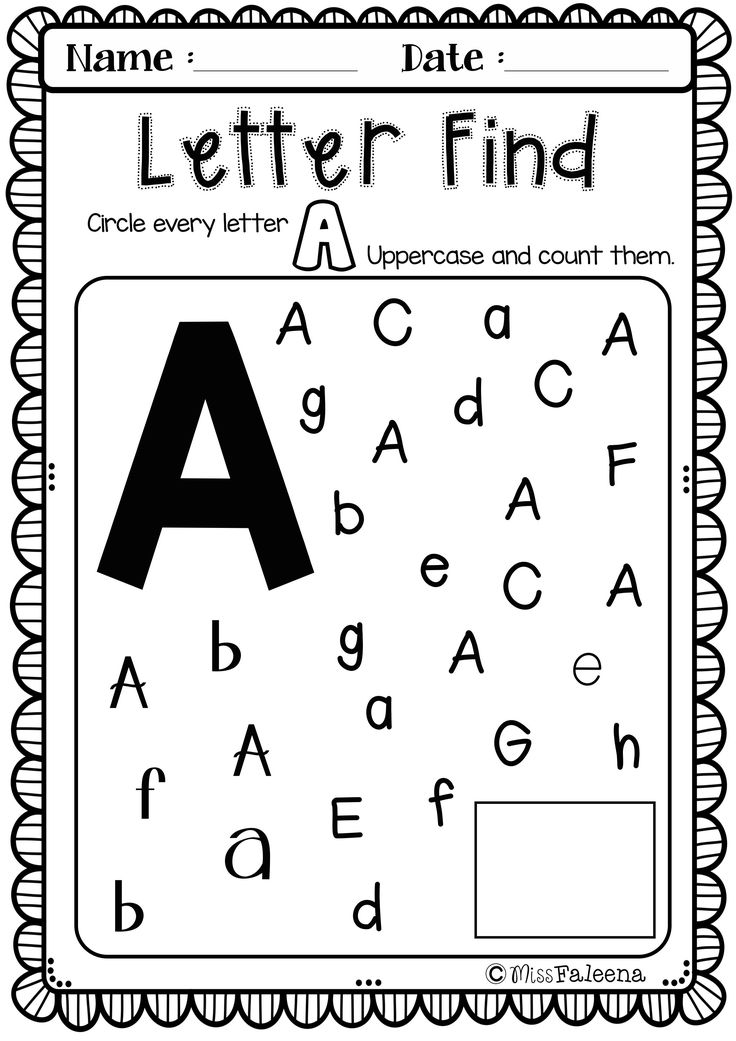 ”
”
Animals, animals everywhere!
Take the children to a zoo! Most all zoos have a petting area for younger children. Talk about each animal and what it eats, what it feels like, and whether or not it would make a good pet.
The “A” Box
Decorate a box with the letter “A”. Inside the box place items or pictures of items that begin with the letter “A”. This also works well if you use pictures, and have each child in turn draw out one picture and tell it’s name and what they would do with it.
Acrobatic “A”‘s
Divide the children into groups of threes. Have the children in each group lie on the floor and use their bodies to form the letter “A”. Let the children in each group trade places and form the letter “A” again, so each child gets a turn at being a different part of the “A”. Then have the children gather in larger groups and form a giant “A”.
Astronomical Astronauts
At circle time, show the children pictures of astronauts and talk about what they do.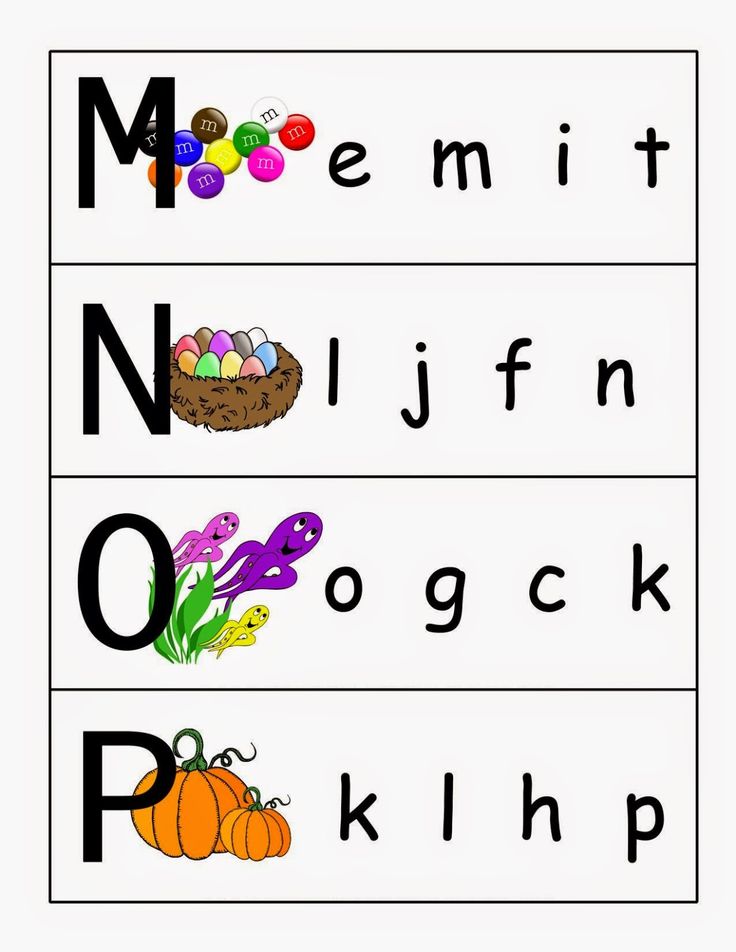 Transform your drama center into the moon. Give the children white shirts, boots, and helmets to wear for the astronaut’s clothing. You can make an astronaut’s helmet by using a paper grocery bag or cardboard box and decorating with foil, stickers, pipe cleaners, Styrofoam balls and other items found in daycare. Have pictures of planets hanging all around the center, and maybe even have the children paint a mural of a rocket ship during creative time and put that up on the wall. Have the children pretend they’re walking on the moon, and talk about what it would be like to be weightless in space.
Transform your drama center into the moon. Give the children white shirts, boots, and helmets to wear for the astronaut’s clothing. You can make an astronaut’s helmet by using a paper grocery bag or cardboard box and decorating with foil, stickers, pipe cleaners, Styrofoam balls and other items found in daycare. Have pictures of planets hanging all around the center, and maybe even have the children paint a mural of a rocket ship during creative time and put that up on the wall. Have the children pretend they’re walking on the moon, and talk about what it would be like to be weightless in space.
“A” is for animals
Cut out magazine pictures of animals and laminate, if you wish. Have the children put them on the wall in daycare to make your own zoo, or put the pictures together in a picture book for the daycare. Then have the children draw 4 of their favorite animals and make a picture book for each child to take home. Alternatively, photocopy animal coloring book pages for the children to color and make a picture book.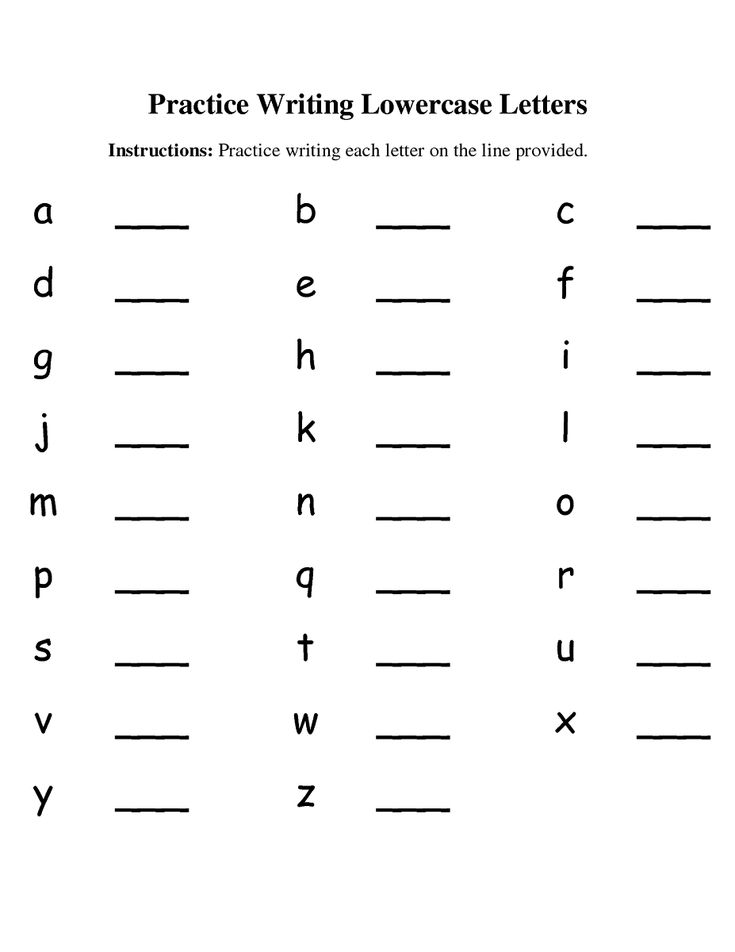
Animal Masks
Make animal masks out of paper plates or grocery bags using decorative items such as stickers, tissue paper, markers, glue, yarn, etc. Have a puppet show or small play and let the children make up their own lines for their animal.
Moon Walk
Along the astronaut theme, have children look for “moon rocks” in a treasure hunt. Make the moon rocks out of balled-up aluminum foil or paint Styrofoam balls in silver.
“A” is for Antarctica, Africa, and Australia
Use a globe or world map to show the children where these different continents are compared to our own. Talk about what a continent is, and read books or show videos on the different continents to learn about their culture. Encourage the children to become a group pen pal (for younger children) or individual pen pals (for older children) with children from other places in the world. There are sources all over the internet to get them started on this.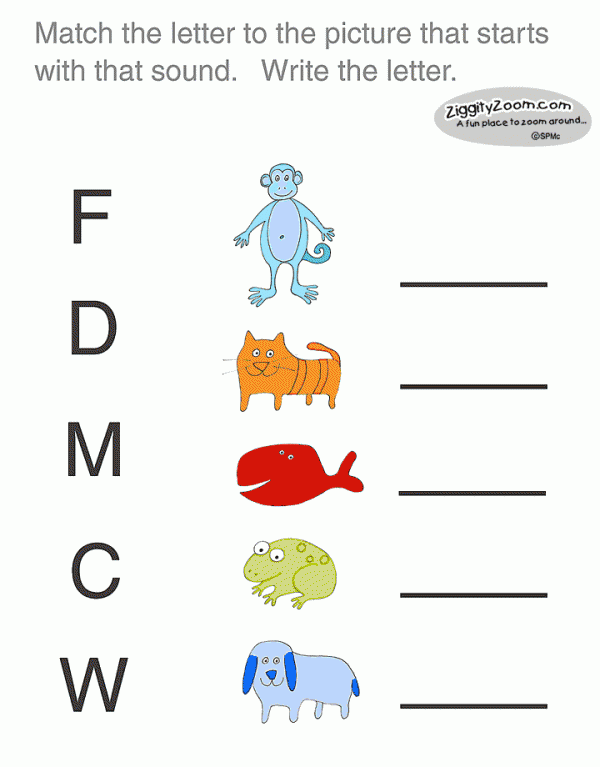 You can also explore what kinds of toys children on these continents play with, and show the children how to make their own.
You can also explore what kinds of toys children on these continents play with, and show the children how to make their own.
Alligator Fun
Let the children pretend to be alligators in a swamp. Call “Alligators Go!” and “Alligators Stop!” at random. When the Alligators are all going, they make the short sound of the letter “A”. When they are stopped, they are very quiet. Anyone who makes a sound when they’re stopped is “eaten” and is out.
Who Am I?
Give the children clues about an animal, and let them guess which animal you are describing.
Where Do I Belong?
Mount pictures of animals on a tag board or felt board. Have the children sort the pictures into farm, pet or zoo categories.
Grow Your Own Avocado Plant!
Get several avocados. Cut them open to remove the pits. Help the children plant the pits by sticking three toothpicks in the sides of each pit, evenly spaced. Fill a small glass with water, and set the pits so that the pointed end of the pit is in the water. Watch the root of the avocado grow, then replant in loose soil. This makes a beautiful plant, but it will usually not yield avocados, as most avocado trees take an average of 13 years to produce fruit, and they must be cross-pollinated with other avocado trees to produce fruit.
Watch the root of the avocado grow, then replant in loose soil. This makes a beautiful plant, but it will usually not yield avocados, as most avocado trees take an average of 13 years to produce fruit, and they must be cross-pollinated with other avocado trees to produce fruit.
Accordion Folding
Teach the children to make accordion folds, and have them create something that makes use of the folds. Examples include a bird with wings, a woman wearing a skirt, or a simple paper fan.
Alphabet Hunt: Hide some pictures of things beginning with the letter “A”, around the room, some easily visible and some a little harder to find. Then let the children go on a hunt for the pictures.
Simple Snacks:
Almonds
Alphabet cereal
Alphabet soup
American cheese
Angel Food Cake
Animal Crackers
Apple Butter/Juice
Apples, applesauce
Apricot
Asparagus
Avocados
Apple Chat: Give each child an apple.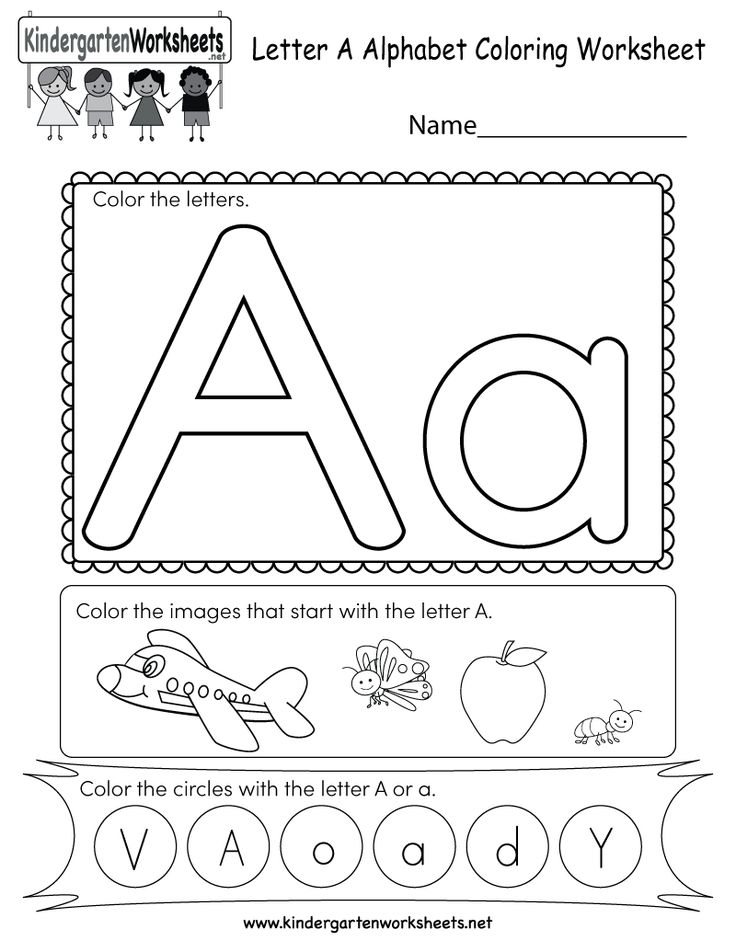 Ask them to describe the apple using all of their senses except taste. Then cut the apple in half and explain that they grow from seeds. Point out the various parts, invite them to count the seeds, and cut the apple into bite-size pieces. Let them eat a piece and describe how it tastes
Ask them to describe the apple using all of their senses except taste. Then cut the apple in half and explain that they grow from seeds. Point out the various parts, invite them to count the seeds, and cut the apple into bite-size pieces. Let them eat a piece and describe how it tastes
Ants on a Log or Raft: Spread cream cheese on a piece of celery (log) or a Triscuit-type cracker (raft). Let the children put raisins on their logs and rafts.
Letter “A” Taste Test: Try apples, avocados, artichokes, apricots, and any other foods starting with the letter “A” that you can find.
Baked Acorn Squash: Show the children an acorn squash. Put an acorn and the squash beside each other, and discuss how they are alike and how they’re different. Ask the children how they think an acorn squash got it’s name. Help the children see that an acorn squash is shaped like an acorn. Then use the squash to make A-Okay Acorn Squash as follows: Cut the squash in half lengthwise, scoop out seeds and pulp. Put the squash face down in a baking pan and pour in about 1/2 inch of water. Bake at 375 for 25 minutes. The squash is done when the flesh is soft. Pour the water out and turn the squash over. Put a little butter and brown sugar over the squash, and add cinnamon or nutmeg if desired. Put the squash back in the oven until the butter has melted. Enjoy!
Put the squash face down in a baking pan and pour in about 1/2 inch of water. Bake at 375 for 25 minutes. The squash is done when the flesh is soft. Pour the water out and turn the squash over. Put a little butter and brown sugar over the squash, and add cinnamon or nutmeg if desired. Put the squash back in the oven until the butter has melted. Enjoy!
Finger Puppets
Finger puppets are always a big hit in role playing with children. They can be easily made from construction paper, and decorated with almost anything, such as cotton balls, glitter, yarn, markers, stickers, etc. Have each child make up a finger puppet and divide the children into small groups. Have each group do a small puppet show for the others. You can easily construct a stage out of a cardboard box, using tissue paper or fabric scraps for the side curtains.
I’m a Little Airplane
(Sung to the tune of “I’m a Little Teapot”)
I’m a little airplane (children raise arms from sides to shoulder height)
Watch me fly! (Spin one arm in front as if a propeller)
Here are my instruments
From down low to up high (With their other arm, they reach from the ground to above their heads)
First I get all revved up (Make engine-like noises while still spinning their arms)
Then I can fly (Raise arms to shoulder height)
Lifting off the runway (start walking forward)
Up into the sky! (Go up on their tiptoes and continue to move forward.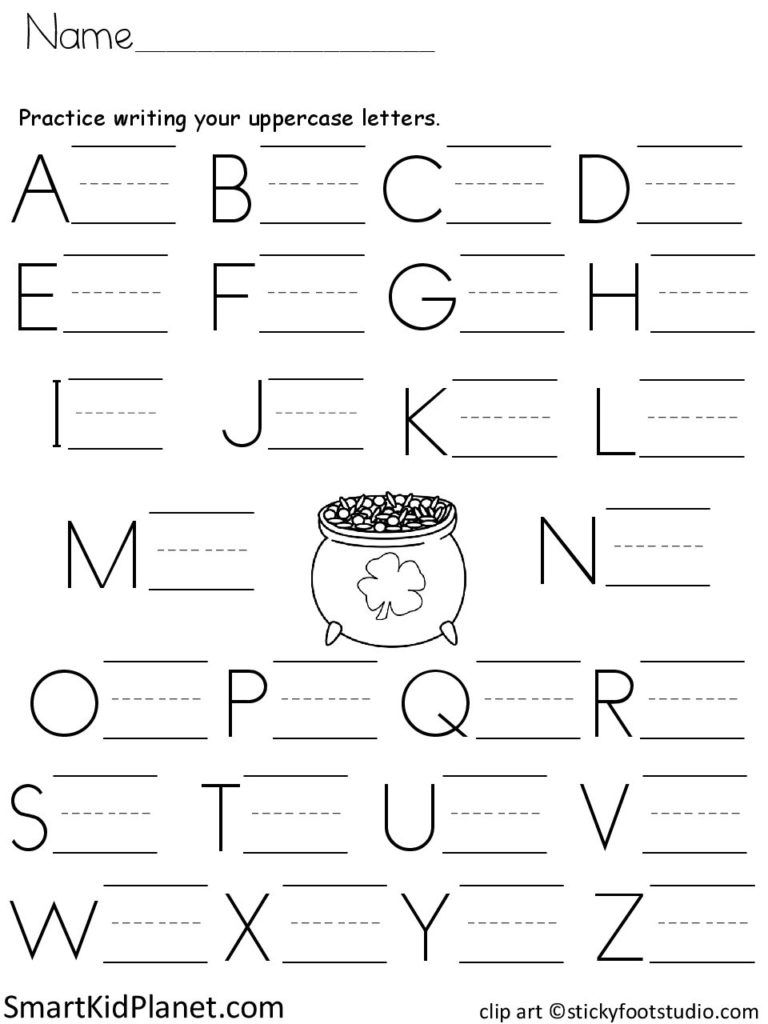 Let them circle awhile before returning to their original positions.)
Let them circle awhile before returning to their original positions.)
Ants
Ants, ants,
Everywhere,
Rushing here,
Rushing there.
Carrying treasures
To their nest,
Never stopping
For a rest.
Ants, ants
Here and there,
Hurrying and scurrying
Everywhere.
Alligators and the Monkeys
5 little monkeys
Sitting in a tree
Teasing the alligator
“Can’t catch me!”
Along came the alligator
Quiet as can be (whisper this part loudly)
SNAP!!! No more monkeys sitting in the tree! (snap your hands together and tickle the kids)
Sing Hurray for A!
(To the tune of “Farmer in the Dell”)
Let’s sing hurray for A,
Let’s sing hurray for A,
Let’s sing hurray for A today
Let’s sing hurray for A.
Apple starts with A,
Asparagus starts the same way,
Let’s sing hurray for A today,
Let’s sing hurray for A.
When the Ants Go Marching In
Oh when the ants
Go marching in
Oh when the ants go marching in
How I want
To be in that number
When the ants go marching in
(Good song for the children to march around the room to)
Dear Reader: You can help us make this theme even better!
All of our theme ideas have come from our imagination and from reader submissions.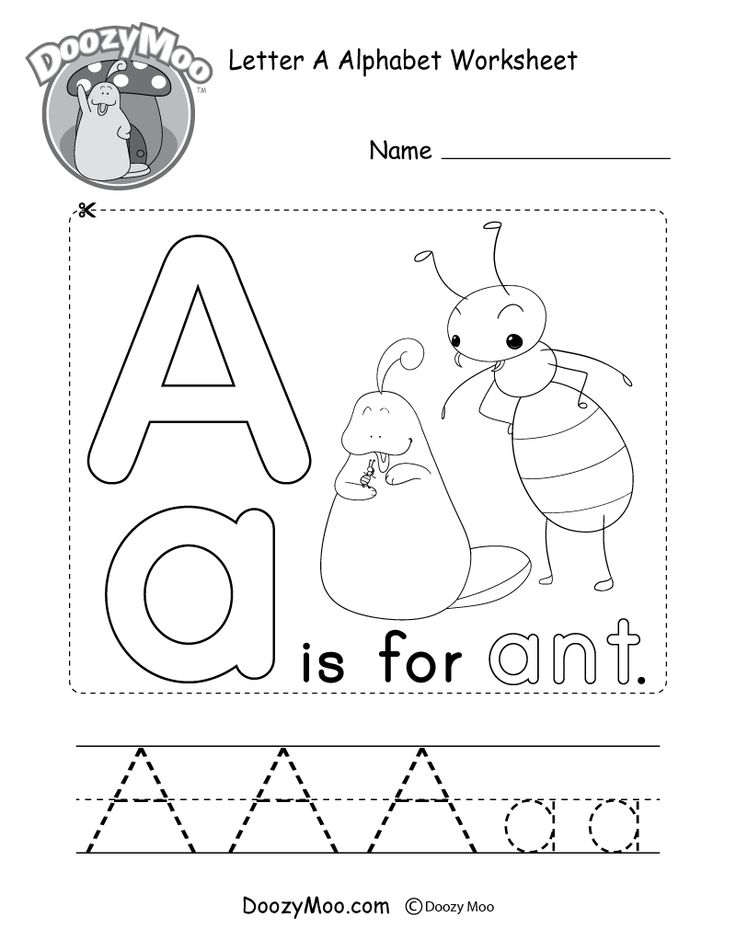 Please use this form to contact us if you have crafts, activities, games, recipes, songs or poems that you would like us to add to this theme.
Please use this form to contact us if you have crafts, activities, games, recipes, songs or poems that you would like us to add to this theme.
Spread the love
5 Ways to Learn the Alphabet Quickly and Easily with a 3-6 Year Old Child – Somersault
Before learning the alphabet with a child, it is important to understand what you are not going to do. Namely, learning to read. This is a more complex skill, so it is worth putting it off until the time when the child gets acquainted with all the letters and will confidently recognize them and write on their own. Until then, put off the alphabet and reading by syllables.
In this article, we have put together the basic principles to quickly learn the Russian alphabet with a 3-6 year old child in a playful way. For all games with letters, you can use plasticine, paints and any improvised means or magnetic letters - they will easily attract the attention of the child.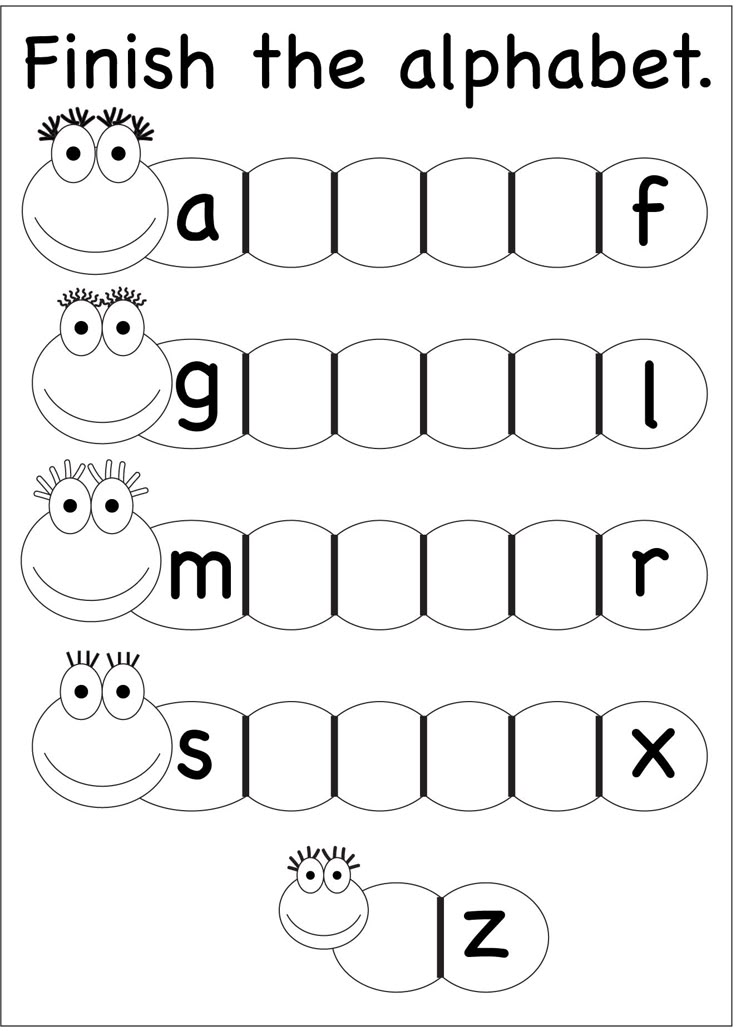
Contents:
- Learn the Alphabet Easily: Basic Principles
- 5 ways to learn the alphabet with your child
- From alphabet to reading
How to Learn the Alphabet Easily: Basic Principles
Each child can find an easy way to learn the alphabet that suits him or her, but there are basic principles that are important for all children. If you do not follow them, study will turn into drill and the child is unlikely to ever love to read. Here are a few such principles on how to properly learn the alphabet for a child.
- Learn sounds first, not letters . At the first stage of learning, it does not matter how the letters in the alphabet are called correctly. Now only sounds are important for the child - "d", and not the letter "De". The names of the letters will only confuse the child, who first needs to learn to recognize the shape of the letters and their sound.
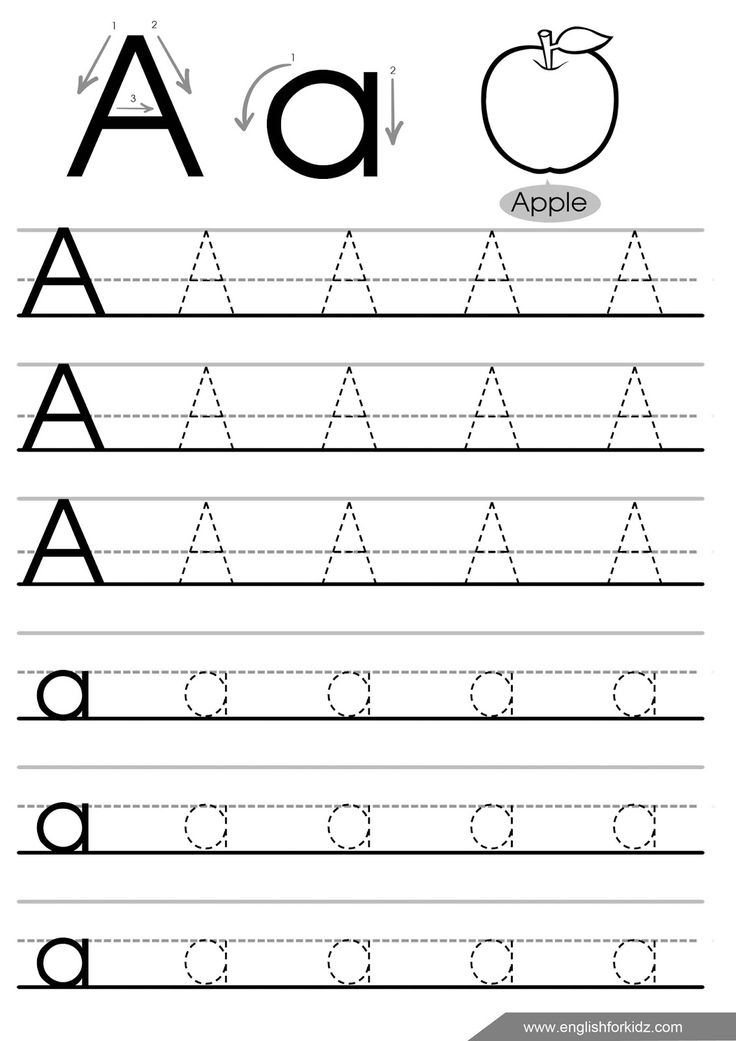
- Not learning the alphabet in the correct sequence . Until a child goes to school, it is of no use to him to know how the letters are arranged in the alphabet. This information will only distract him from what is really important: how the letters look and sound. The sequence of the alphabet can be learned later or even at school, where this knowledge will be tested by the teacher.
- Do not turn learning into a lesson . Learning from call to call is difficult even for children at school, let alone a baby. Therefore, all learning should take place in a playful way and not for long: 5-7 minutes a day to get acquainted with the letters will be enough. Gradually, this time can be increased, especially if the child likes the proposed games with letters.
- Use material objects . At the age of 3-6 years, the child learns the world by touch and taste. It is difficult for him to work with abstract letters spoken aloud.
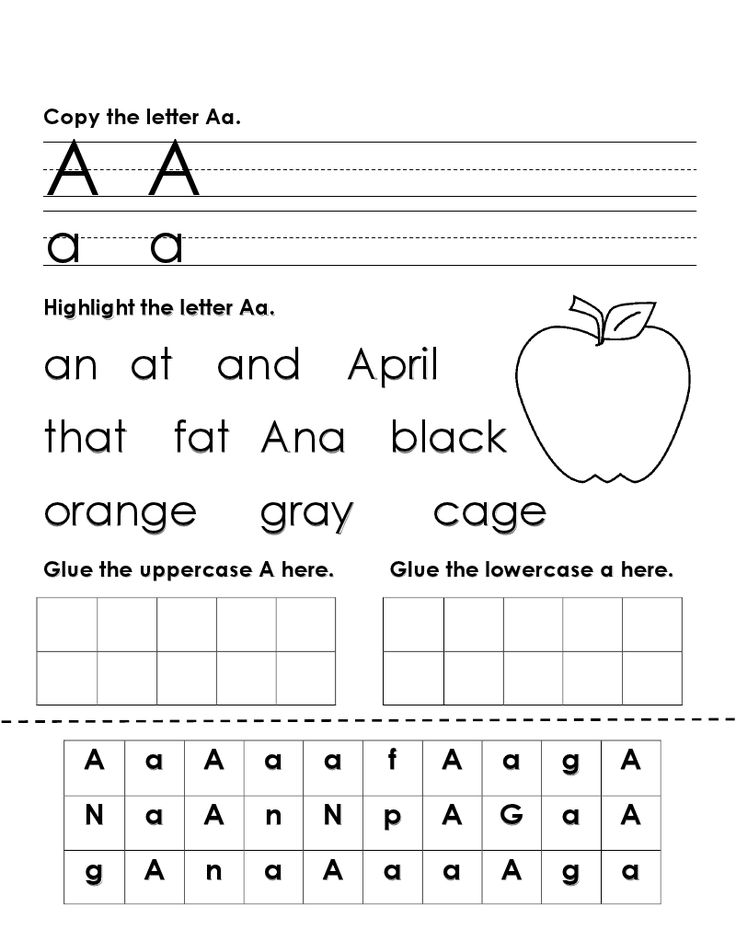 Therefore, it is better to stock up on plasticine and paints and create letters that are more understandable to the child and can be touched. Such a game for children will allow the child to learn the letters of the alphabet and he will recognize them in different forms regardless of what they are made of.
Therefore, it is better to stock up on plasticine and paints and create letters that are more understandable to the child and can be touched. Such a game for children will allow the child to learn the letters of the alphabet and he will recognize them in different forms regardless of what they are made of. - First vowels, then consonants . Vowel sounds are easier to pronounce, so it's worth starting with them.
The main thing is not to force anyone. If you see that the child is inquisitive, enjoys exploring the world and is ready to learn, you can move on to learning letters and the alphabet. So the child will be happy to learn the alphabet in a playful way and gradually learn to read. So that the game is not abstract, you can use the magnetic letters TUMBLING.
5 ways to learn the alphabet with your child
1. Use an interesting topic to study
Use your child's interest to spur his motivation to learn.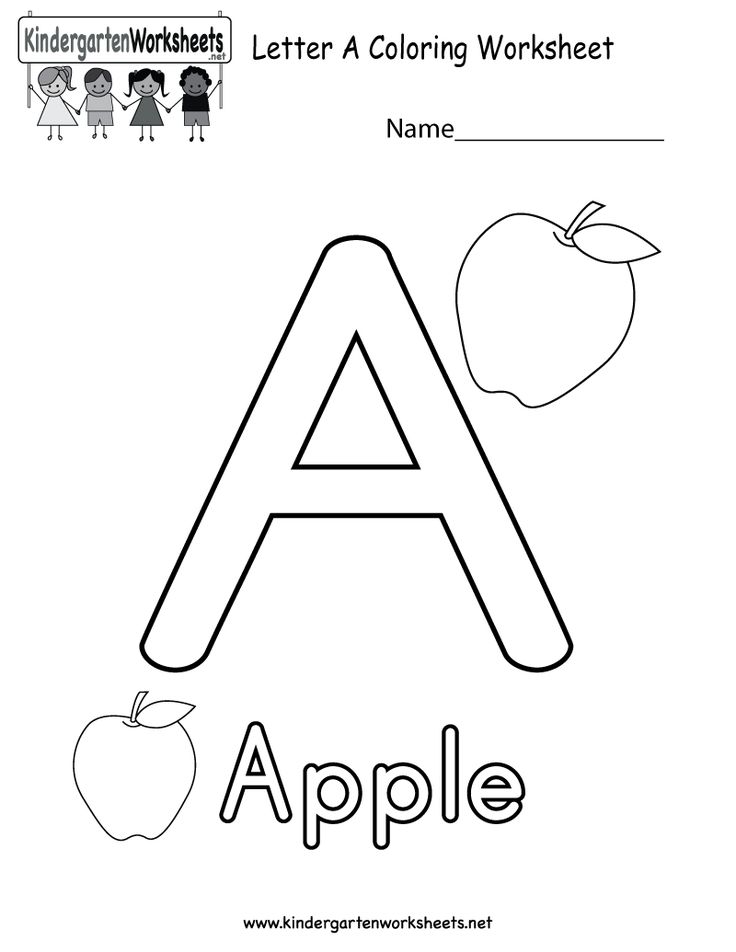 For example, if your kid is crazy about cars, let them be the topic in which you learn the alphabet. Use any words related to cars:
For example, if your kid is crazy about cars, let them be the topic in which you learn the alphabet. Use any words related to cars:
"A" - bus
"B" - trunk
"C" - driver, etc.
You can show cars and their parts, draw or sculpt from plasticine. It is important that the child's focus shifts from learning to doing what they love. Additionally, the method will help expand vocabulary and knowledge about the world.
2. Cross out a letter of the alphabet in the list
Fill in a small square with arbitrary letters. The task is to cross out only the letter that you are studying. This will help the child focus on one letter and not get distracted by the ones he doesn't remember or don't know.
3. Pulling the letters of the alphabet out of the pouch
The soft-touch magnetic letters are perfect for this method. Put the letters in a bag and give the child the task, without looking, to pull out only the letter that you thought of.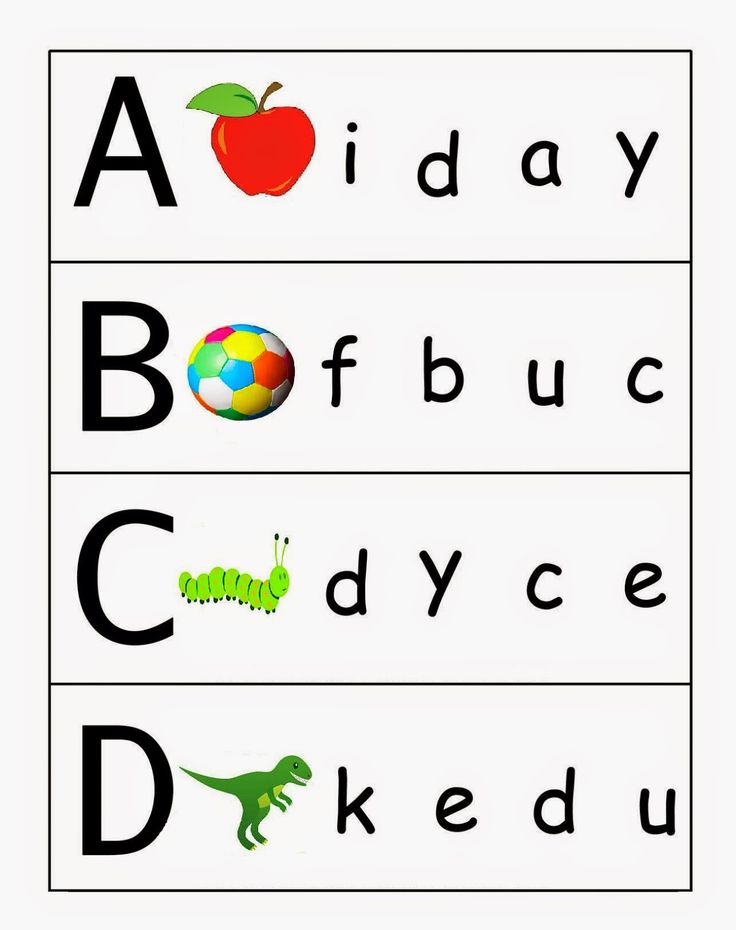 Let there not be too many letters in the bag, otherwise the child will get confused. 6-7 pieces will be enough. To start, use letters that are very different in shape, such as "O" and "M". Gradually, the complexity can be increased and searched among similar letters, for example, "K" and "X". Don't forget to praise and encourage your child. You can alternate the learning process with desktops.
Let there not be too many letters in the bag, otherwise the child will get confused. 6-7 pieces will be enough. To start, use letters that are very different in shape, such as "O" and "M". Gradually, the complexity can be increased and searched among similar letters, for example, "K" and "X". Don't forget to praise and encourage your child. You can alternate the learning process with desktops.
4. Recognize letters of the alphabet by ear
You pronounce a word, and if it contains a hidden letter, the child claps his hands.
With this game for kids, you can learn individual letters or the entire alphabet. For example, you name a word, and the child inserts its first letter into the insert frame. To stimulate a child's interest, you can use only words from his favorite topic, for example, the names of animals.
5. Guess words starting with the first letter
You choose one letter and think of a word that starts with that letter. For example, the letter "Z":
- What is this animal with big ears and loves carrots?
- Hare!
This game form is again suitable for learning individual letters or the entire alphabet.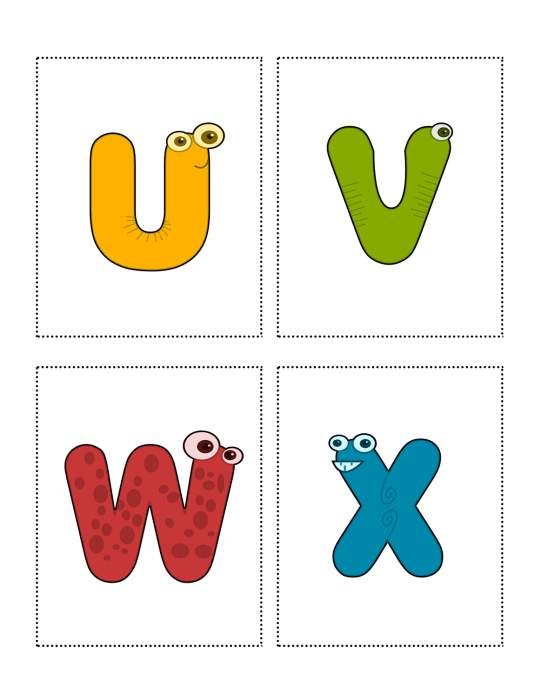 If you learn only one letter, the child gets used to quickly recognizing it in different words. And if you give words with different letters, the child as a whole learns to understand with which letter they begin. With the study of the account and the English language will also help TUMBLING.
If you learn only one letter, the child gets used to quickly recognizing it in different words. And if you give words with different letters, the child as a whole learns to understand with which letter they begin. With the study of the account and the English language will also help TUMBLING.
From the alphabet to reading
When a child learns the Russian alphabet, confidently recognizes all the letters in different words and can draw or mold them on his own, it is worth moving on to reading. Because you need to learn the alphabet just so that the child can read. If knowledge is not used, it will hang as an extra burden, and by the time school will be forgotten. Therefore, you should not learn the alphabet too early: at 3-4 years old, a child is simply not interested in reading books in order to learn something new. He is more interested when his mother reads. Conversely, by the age of six, the child will be glad to have his own books to read them himself.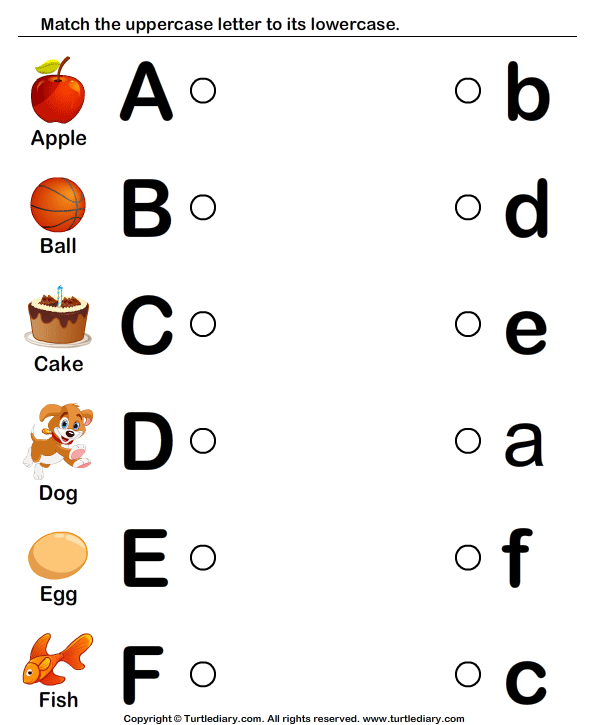
LEARNING LETTERS! Alphabet ABC Games for Kids Toddlers by MAGE
Update! Possibility to choose letter/sound mode!
New game COUPLE - train your memory, learn to read!
Colorful alphabet, funny educational rhymes, fun but useful mini-games and children's puzzles will impress your child and help them learn to read and learn the alphabet. We really wanted to make an application for the youngest children, thanks to which children will be happy to learn letters, and moms will be less nervous, so the LEARN LETTERS app has everything that kids like and moms need:
Electronic alphabet for children - 5 poems for 5 letters of the alphabet, voiced by a child, and funny illustrations for them.
Letter constructor is an educational game that will help your child remember what details each letter consists of, which means that it will be easy to remember letters and the alphabet!
Double puzzles is a well-known game when you need to match a puzzle with a letter to the corresponding puzzle with a picture. We have prepared several pictures for each letter of the alphabet! This game is a preparatory stage in learning to read!
We have prepared several pictures for each letter of the alphabet! This game is a preparatory stage in learning to read!
Read by syllables - a game in which the child needs to catch balloons with syllables in order to form a word. The game has several levels of difficulty - the child will be able to read even difficult three-syllable words!
Couples is a well-known memory training game where you have to turn over two identical cards, adapted for learning to read.
The game has 4 varieties and several levels of difficulty: Match the letters - you need to find and turn over two cards with the same letters. Collect the letter - you need to find and turn over the card with the letter and the corresponding card with the details of the same letter. Find a picture - you need to find and turn over a card with a letter and a corresponding card with a picture for this letter. Read the word - you need to find and turn over the card with the picture and the card with the word corresponding to this picture.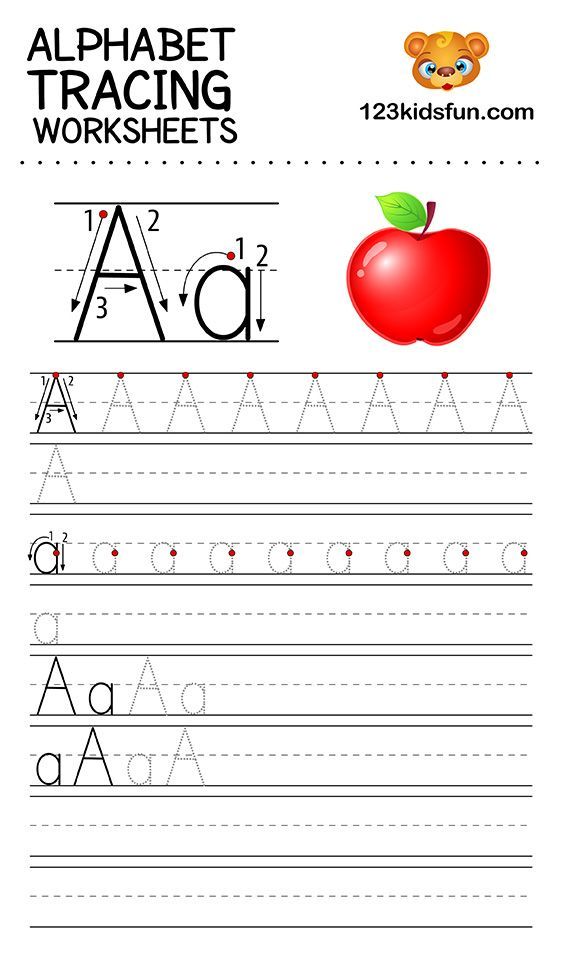
Main features
• 2 in one: learn letters and etiquette
• a poem about the rules of conduct for each letter
• 90 double puzzles
• Russian alphabet for the little ones
• funny speaking alphabet and alphabet in verses in Russian
• preschool learning
• four games for kids aged 2 to 5
• great illustrations for toddlers
• spoken letters, alphabet and illustrations
In the lite version of the application you get 5 letters of the alphabet for free. To get all 33 letters, you need to download the full version of the app.
Comfort and safety:
• user-friendly interface specially designed for the youngest children from 3 to 4 years old
• games have no time limit or scoring
• safe for kids! No third party advertising!
Play, listen to poetry, learn letters and the alphabet, learn to read!
Dear users!
Thank you for using our application. We would like to say a special thank you for your feedback, we are very pleased to read that you like our application.